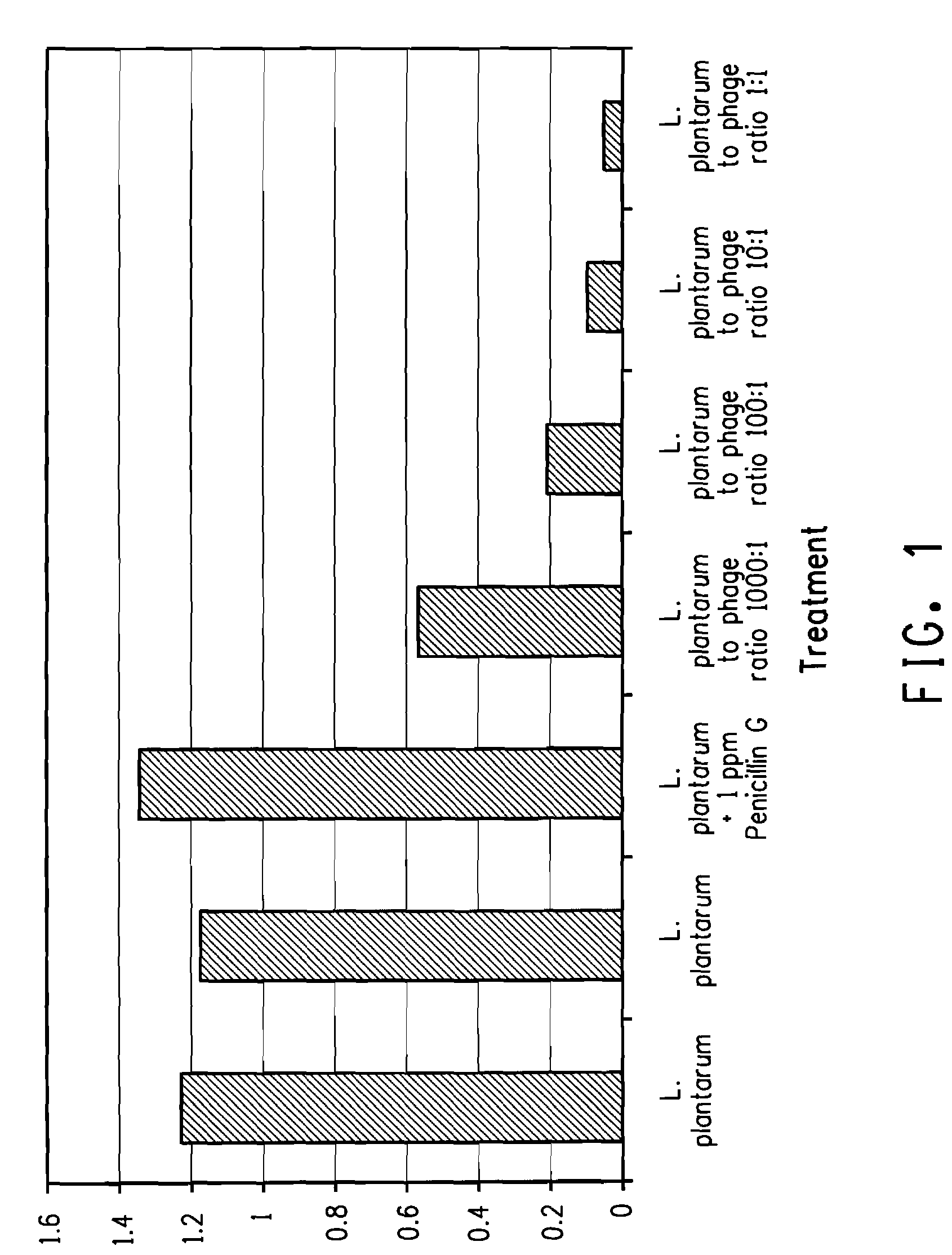Utilization of bacteriophage to control bacterial contamination in fermentation processes
a technology of bacteriophage and fermentation process, which is applied in the direction of viral/bacteriophage medical ingredients, fermentation, biofuels, etc., can solve the problems of reducing the yield of ethanol, grave concern of (competing) bacteria, and affecting the economic of the fermentation process
- Summary
- Abstract
- Description
- Claims
- Application Information
AI Technical Summary
Benefits of technology
Problems solved by technology
Method used
Image
Examples
example 1
[0049]Lactobacillus plantarum is a bacterium commonly isolated from contaminated fuel ethanol fermentation. In this example, a spectrophotometer was used to quantify the growth of L. plantarum in laboratory media. The use of a spectrophotometer allowed rapid determination of bacterial levels by optical density. The optical density indicates the amount of light (at a wavelength of 450 nm) absorbed by a sample. High levels of bacterial growth in a sample well result in higher optical density.
[0050]L. plantarum ATCC 8014 was cultured overnight in MRS broth (available from Difco, Sparks, Md.) at 30° C. Stocks of L. plantarum ATCC 8014 bacteriophage (bacteriophage cocktail is referred to in the Examples as “B-8014”) were prepared and titered using the overlay method (Adams, M. H. The Bacteriophages, Interscience Publishers, New York, 1959) with MRS agar. Since bacteriophage (phage) are viruses, they are unable to replicate outside of their bacterial host. Therefore, to enumerate phage, c...
example 2
[0055]Samples of corn mash were collected from a commercial fuel ethanol plant. The corn mash was collected immediately after liquefaction, prior to entry into fermentation. Corn mash samples were frozen upon arrival and defrosted for use in experiments.
[0056]Lactobacillus plantarum ATCC 8014 was cultured overnight in MRS broth (Difco, Sparks, Md.). Samples of corn mash were inoculated with L. plantarum at approximately 104 CFU / ml. This level of bacterial contamination is common in fuel ethanol plants. L. plantarum bacteriophage (B-8014) were prepared and titered using the overlay method on MRS agar (as described in Example 1). Corn mash samples containing L. plantarum were treated as indicated in Table 1. One sample of corn mash received no treatment. A second sample was treated by the addition of 3 parts per million (ppm) of Penicillin G. Three additional samples were treated with phage at a bacteria to phage ratio of 1:1, 1:10, and 1:100. All mash samples were incubated at 33° C....
PUM
 Login to View More
Login to View More Abstract
Description
Claims
Application Information
 Login to View More
Login to View More - R&D
- Intellectual Property
- Life Sciences
- Materials
- Tech Scout
- Unparalleled Data Quality
- Higher Quality Content
- 60% Fewer Hallucinations
Browse by: Latest US Patents, China's latest patents, Technical Efficacy Thesaurus, Application Domain, Technology Topic, Popular Technical Reports.
© 2025 PatSnap. All rights reserved.Legal|Privacy policy|Modern Slavery Act Transparency Statement|Sitemap|About US| Contact US: help@patsnap.com


